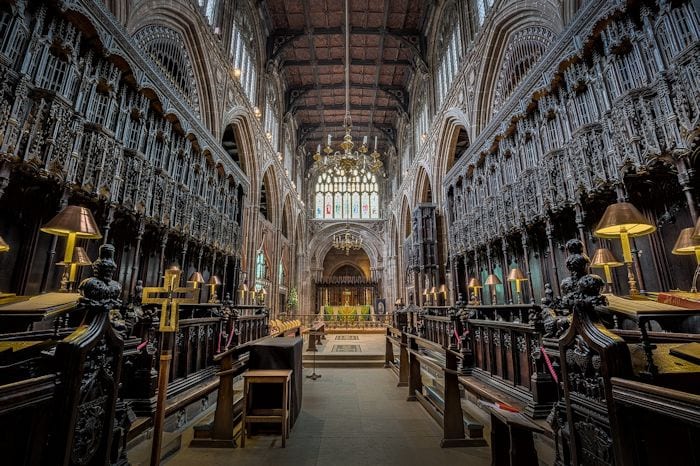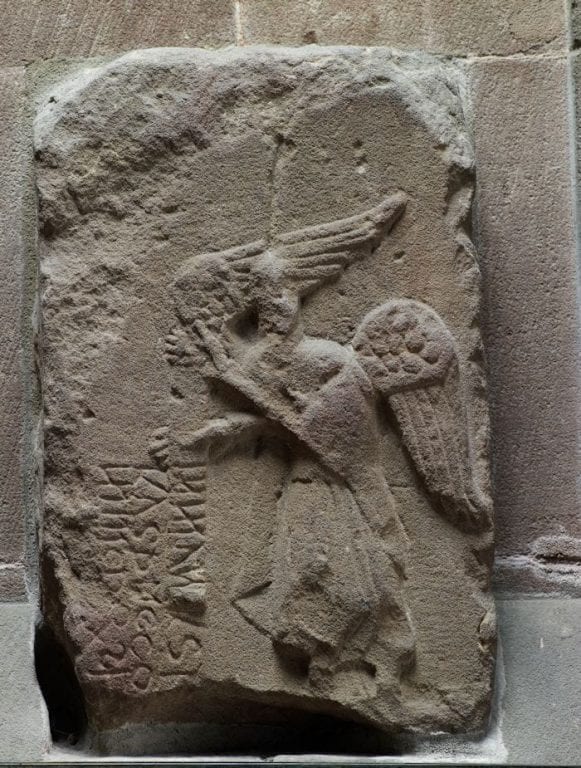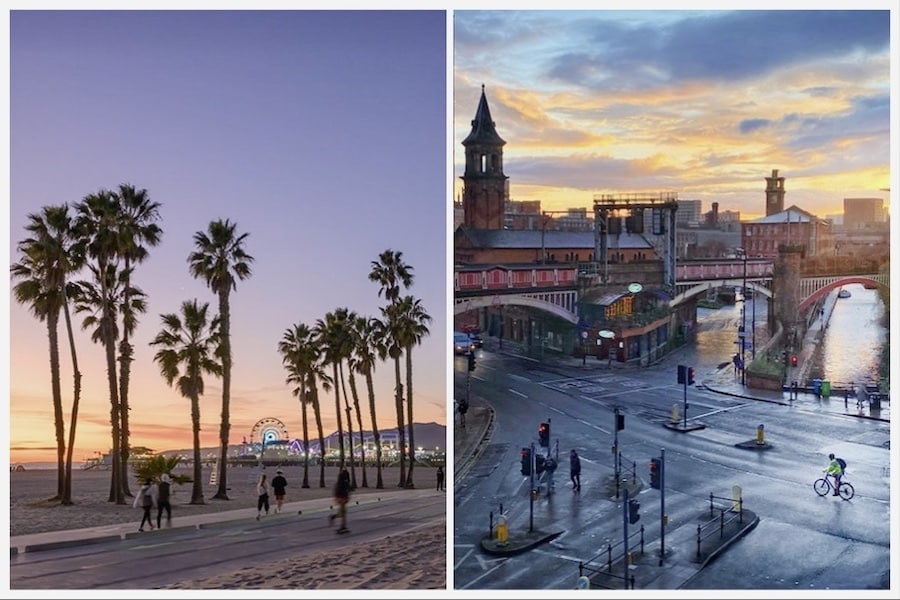The hidden medieval artifact uncovering the story of Saxons and Vikings in Manchester
- Written by Ed Glinert
- Last updated 1 year ago
- Cornerstone, Culture, History

Medieval European cities had cathedrals at their centres. Manchester Cathedral, also known as “The Cathedral and Collegiate Church of St. Mary, St. Denys, and St. George,” is Manchester’s cathedral and the home of the Bishop.
An angel carving found hidden in the cathedral’s wall suggests there was possibly an earlier church there around 700 AD. The Brigantes tribe settled in that location before this, and then William the Conqueror recorded the existence of a parish church on the site in 1086. The cathedral went through many changes, including renovations and restorations.
The Angel Stone (ca. 700 AD) found embedded in the wall of the south porch, indicates the possible existence of an earlier Saxon church on this same site.

The Roman withdrawal from Britain in 410 left Manchester open to invasion. The Saxons arrived in 429. The early 19th century historian Joseph Aston claimed “Manchester remained subdued until the reign of Edwin [c. 620] when Mancastle, though retained as a defence for the town, lost somewhat of its consequence.”
Thomas Baines’s history of Lancashire relates how “in AD 620 Edwin, King of Northumbria, crossing the ridge of mountains which form the boundary of Yorkshire and Lancashire, entered the parish of Manchester and permanently reduced the town under the dominion of the Saxons.”
Did Vikings invade Manchester?
In 870 there were new invaders: the Vikings sailed up the Mersey in longboats. Evidence of their sojourn is confined to what ranks as the second oldest construction in the area – Nico Ditch, a six-mile earthwork running east-west across south Manchester. It can still be seen in Platt Fields and Denton golf course and still forms council ward boundaries.
Legend has it that when warned that invaders were coming from the south the people of Mamecaestre or maybe Manceastre (read how Manchester got its name), dug a ditch their own height deep and wide, filling it with foliage to obstruct the Danish wagons.
Otherwise, we don’t have much evidence of Saxon or Viking Manchester as records weren’t kept. Nobody thought Manigceastre, this obscure tract of land cut off from the important towns on the eastern side of the country such as York, to be important. We were a thousand years from the Industrial Revolution that would make Manchester one of the most formidable cities in the world.
But we do have the Angel Stone.
What is the Angel Stone?
The Angel Stone is a small piece of rock bearing the relief of an angel with extended wings holding a scroll. It was discovered embedded in the wall of the original south porch of Manchester Cathedral during building work, possibly in the year 1891.
The Angel Stone has been dated to around 700, making it the oldest relic of what, for at least seven hundred years, was St Mary’s, the original church on the site, long before it became a cathedral.
The legend on the stone reads “In manus tuas domine commendo spiritum” (“Into thy hands O lord I commend my spirit” [Psalm 31]).
A picture of the Angel Stone was the first halftone photograph to appear in the Manchester Guardian in 1905.
To find out more about the history of the city through its sites, signs, symbols, statues, settings, join tour guide and author Ed Glinert on one of his New Manchester Walks. More information on the website.
- This article was last updated 1 year ago.
- It was first published on 15 February 2019 and is subject to be updated from time to time. Please refresh or return to see the latest version.
Did we miss something? Let us know: press@ilovemanchester.com
Want to be the first to receive all the latest news stories, what’s on and events from the heart of Manchester? Sign up here.
Manchester is a successful city, but many people suffer. I Love Manchester helps raise awareness and funds to help improve the lives and prospects of people across Greater Manchester – and we can’t do it without your help. So please support us with what you can so we can continue to spread the love. Thank you in advance!
An email you’ll love. Subscribe to our newsletter to get the latest news stories delivered direct to your inbox.
Got a story worth sharing?
What’s the story? We are all ears when it comes to positive news and inspiring stories. You can send story ideas to press@ilovemanchester.com
While we can’t guarantee to publish everything, we will always consider any enquiry or idea that promotes:
- Independent new openings
- Human interest
- Not-for-profit organisations
- Community Interest Companies (CiCs) and projects
- Charities and charitable initiatives
- Affordability and offers saving people over 20%
For anything else, don’t hesitate to get in touch with us about advertorials (from £350+VAT) and advertising opportunities: advertise@ilovemanchester.com


Review: Tambo & Bones at HOME is ‘ambitious, bold, gutsy…. and terrific’

Review: JB Shorts 26 at 53two is ‘a five-star showcase of northern talent’


















